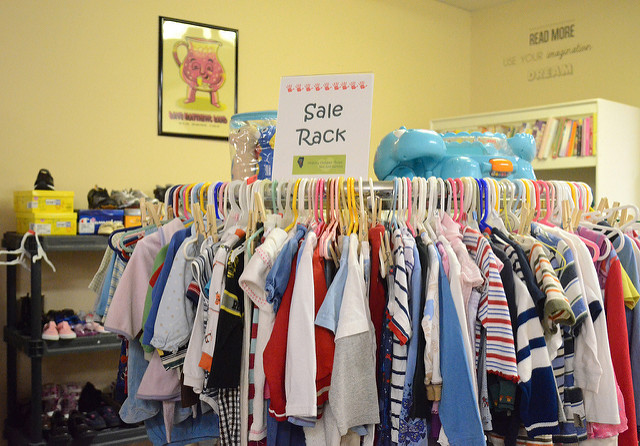What are you looking for?
A “clothes closet” or “community closet” is a variation on the thrift store theme that focuses on clothing. Donated clothing comes in and goes out at little or no cost to those in need. This kind of outreach is a good fit for a food pantry, as providing food and clothing meets two basic human needs.
Ways to operate
1. One way to run a clothes closet meets people where they’re at financially. If clients can demonstrate that they are unable to pay during an interview, they will be allowed to ‘shop’ for a certain number of items that they can take home at no cost. If the person does have the ability to pay, a reasonable pricing method can be used like paying a flat rate of $5 for a grocery bag full of clothes.
2. The ‘thrift price’ model for operating a clothes closet has been made very popular by Goodwill Industries. They receive clothing items and then price each one for individual sale at a greatly reduced price. Prices for items vary from less than $1 to $10.
3. Another option is to partner with an organization like the Williams Companies in NC, who will pay a flat rate per pound for clothing that will be sent to the mission field in places like Africa. These companies will take clothing that isn’t likely to sell in a thrift store.
A major benefit of running a clothes closet is that they take an available resource (old clothes) and turn it into either material for ministry or resources for funding your ministry.
What you’ll need
For the clothes closet model to work you’ll need the following:
Clothing
The number one thing that you’ll need for your clothes closet is clothes. Do a clothing drive! Make sure that you publicize your clothing drive and have special designated collection location. You can run your clothing drive in one or two ways. One is to have a permanent collection point where people can drop off their old clothes. This is convenient for the schedules of people who are cleaning out their closets and storage spaces.
The other way to do it is to have a designated month (or two) that you announce as the special clothing drive season. This works because it gets the attention of people who would like to give but don’t know how to give. You can combine these two options by setting up a permanent drop off location as well as doing a couple of annual big pushes for donations. Make sure that you use your social media accounts to spread the word.
Space
You’ll be amazed how much space running a clothes closet will take. The best way to run a clothes closet is like a store where people are able to look through what is available and choose for themselves. A changing room where they can try them on is also a good idea.
Washers
Every piece of clothing that is donated will need to be laundered prior to being given away or sold.
Volunteers
Clothing will need to be sorted, washed, folded or hung up, and displayed before it reaches the person who will take it home. This takes a lot of time and volunteers are your best bet.
Clothing display supplies
Hangers, racks, shelving. You’ll need the right equipment to store the clothing in a neat and attractive fashion.
Accounting principles and equipment
If you’re selling the clothing, you’ll need to be able to take money, make change, and pay taxes (depending on where you’re located.) I’m not anywhere remotely qualified to tell you what tax laws in your state require, but it is likely that you’ll at least have to charge sales tax for anything you sell. Check with a competent tax attorney or accountant so you have the right information from the beginning.
Advertising
You’ll need some way to communicate both the need for donations and the availability of clothing. People won’t know about your ministry unless you tell them.
Looking for more articles about charitable enterprises? Try these:
- What are Charitable Enterprises?
- What do I need to run a silent auction?
- How do I run a raffle?
- What is a rummage sale? How do I run one?
- What is product marketing fundraising?
- Can you raise money with service projects?
Check out The Fundraiser’s Playbook for a full list of fundraising articles.
Would you like to learn more about raising money for Church and Ministry? Check out Letters From The Almoner, now available on Amazon.com.
Image courtesy of KOMUnews, via Creative Commons License, some rights reserved.








